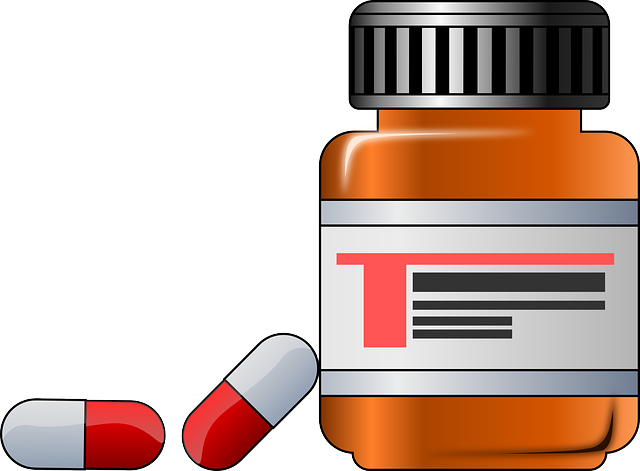GLP-1 drugs, mimicking natural hormones, are transforming diabetes management by regulating blood sugar levels and aiding weight control. Evolving from first-generation agonists like exenatide and liraglutide to new "emerging agonists," these medications offer improved convenience, duration, and reduced side effects. Current clinical trials explore their safety and efficacy for diverse patient populations, focusing on personalized medicine approaches to address varying treatment responses in Type 2 diabetes. Late-stage trials aim to gain regulatory approval, promising enhanced glycemic control, reduced weight gain, and lower cardiovascular risks, while monitoring potential side effects like pancreatitis. The future of GLP-1 therapy looks bright with ongoing research optimizing delivery methods and expanding access to these effective treatments, potentially revolutionizing diabetes care.
“Emerging GLP-1 agonists are revolutionizing diabetes management, building upon the foundational role that GLP-1 drugs have played. This article delves into the evolution of these treatments, from first-generation therapies to the latest innovations now in clinical trials. We explore their mechanism, efficacy, and safety in diverse patient populations, highlighting both the potential benefits and challenges. Furthermore, we gaze into the future of GLP-1 therapy, anticipating expanded access and personalized medicine.”
Understanding GLP-1 Agonists and Their Role in Diabetes Management

GLP-1 agonists are a class of drugs that mimic the effects of the natural hormone glucagon-like peptide-1 (GLP-1). They play a significant role in diabetes management, particularly in type 2 diabetes. These drugs stimulate insulin secretion in a glucose-dependent manner, meaning they promote insulin release when blood sugar levels are high and inhibit it when they’re low, helping to maintain balanced blood sugar levels.
Beyond their insulinotropic effects, GLP-1 agonists also slow gastric emptying, reducing the speed at which food moves through the digestive system, which can aid in weight management. As emerging GLP-1 agonists continue to be explored in clinical trials, they hold promise for improving diabetes control and addressing comorbidities, potentially offering a more effective and patient-friendly approach to managing this chronic condition.
The Evolution of GLP-1 Drugs: From First-Generation to Emerging Agonists

The journey of GLP-1 drugs has evolved significantly since their inception, marking a significant milestone in diabetes management and beyond. First-generation GLP-1 agonists, such as exenatide and liraglutide, introduced the concept of mimicking the natural hormone glucagon-like peptide-1 (GLP-1) to regulate blood sugar levels. These drugs offered improved glycemic control with once or twice-daily administration, compared to traditional insulin injections.
However, the emergence of newer, so-called “emerging agonists” pushes the boundaries further. These cutting-edge compounds not only enhance GLP-1’s effects but also address limitations of previous generations. They are designed to provide more convenient dosing regimens, potentially longer durations of action, and reduced adverse effects. With ongoing clinical trials, these emerging GLP-1 agonists hold promise for transforming diabetes care, offering patients more flexibility and better management options while continuing to build upon the foundation laid by their predecessors.
Clinical Trial Landscape: Evaluating the Efficacy and Safety of New GLP-1 Agonists

The clinical trial landscape for GLP-1 agonists is dynamic and ever-evolving, with a growing number of new candidates entering evaluation. These trials are meticulously designed to assess not only the efficacy of these drugs in managing diabetes and its complications but also their safety profiles. The focus is on identifying any potential adverse effects, understanding drug interactions, and determining optimal dosing regimens.
Current studies involve diverse patient populations, allowing for a comprehensive analysis across various demographic groups. This includes evaluating GLP-1 drugs’ performance in different age ranges, body types, and racial backgrounds, ensuring that the benefits observed are relevant and safe for a wide spectrum of individuals with metabolic disorders.
Targeting Specific Patient Populations: Personalized Medicine in Type 2 Diabetes

Emerging GLP-1 agonists in clinical trials are reshaping the landscape of Type 2 diabetes management by offering more personalized treatment options. Unlike traditional medications that target a broad population, these new drugs focus on specific patient characteristics and biological pathways. This approach, often referred to as personalized medicine, recognizes that not all patients with Type 2 diabetes respond equally to standard treatments.
By targeting specific patient populations, GLP-1 drugs can deliver more precise and effective management. For example, certain agonists may be tailored for individuals with inadequate insulin secretion or those who are resistant to existing therapies. This level of customization promises to enhance glycemic control, reduce side effects, and improve overall patient outcomes.
Potential Benefits and Challenges of Late-Stage Clinical Trials for Emerging GLP-1 Agonsits

Emerging GLP-1 agonists, a promising class of diabetes treatments, are advancing through late-stage clinical trials, offering potential benefits for patients with type 2 diabetes. These trials aim to evaluate the safety and efficacy of new compounds, which could provide improved glycemic control, reduced weight gain, and potentially lower cardiovascular risks compared to existing GLP-1 drugs. The advantages include their ability to mimic the natural hormones, leading to more sustainable blood sugar management.
However, late-stage clinical trials also present challenges. Ensuring patient safety and long-term monitoring is crucial due to potential side effects associated with GLP-1 agonists, such as pancreatitis and thyroid issues. Additionally, maintaining regulatory standards and demonstrating significant advantages over existing treatments are essential for these emerging drugs to gain market approval. Success in late-stage trials could pave the way for innovative GLP-1 therapies, offering patients more options for managing their diabetes.
The Future of GLP-1 Therapy: Unlocking New Possibilities and Expanding Access

The future of GLP-1 therapy looks promising, with emerging agonists pushing the boundaries of what’s possible in diabetes management. These new GLP-1 drugs offer enhanced efficacy and improved patient convenience compared to their predecessors. They are designed to mimic the natural actions of glucagon-like peptide-1, a hormone that helps regulate blood sugar levels.
By expanding access to more effective treatments, these innovations could significantly impact the lives of individuals with diabetes. The ongoing clinical trials focus on optimizing delivery methods and understanding long-term effects, paving the way for broader availability and potentially revolutionizing diabetes care.
